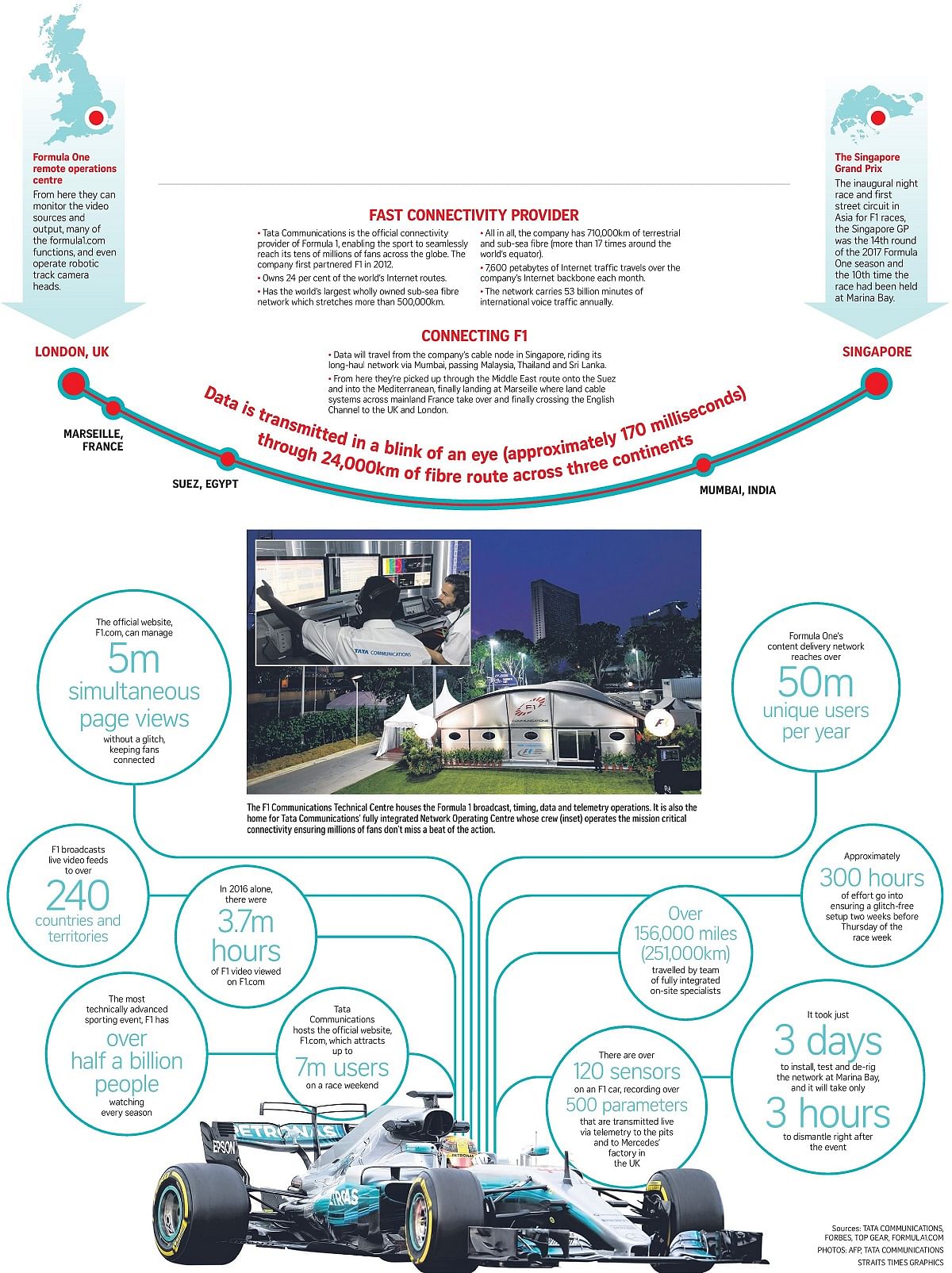Gleaming, screaming cars are what fans look out for at Formula One (F1) races, but the software behind the hardware plays an equally important part in the teams' success on the track.
For instance, at Renault Sport F1, defining a car set-up from data collected for specific tracks can save the team up to one second per lap - in an industry where every millisecond counts.
The data is gathered through the telemetry system in the cars.
"When the car is running on the track, it sends through the telemetry system (two sensors) that is set up on the track, thousands of data series," said Renault Sport F1 chief information officer Pierre d'lmbleval at Microsoft Singapore's media conference for the Republic's night race.
"That's how we compute from a local basis, at the mobile data centre we set up at each track."
The engineers of the team will then - through those channels - analyse the data in real time. They can then give suggestions to the team that can help both car and driver improve performance.
"With Microsoft Cloud, we are now able to analyse sets of data retrieved from the race cars on the track in real time in order to maximise race simulations," said d'lmbleval. "Insights can be immediately retrieved and further analysed by our engineers in our two factories based in Oxfordshire and Paris."
One way the data is used is through a race simulator designed by the team.
The simulator, which is "basically a huge video game" according to d'lmbleval, is made as realistic as possible for accurate results. In the course of a season, 94 million race strategy simulations are run, in order to gain a time advantage.
The easiest element to simulate is the track as the data is collected by the team scanning the track on a regular basis.
To d'lmbleval, the hardest thing to simulate are the tyres, as many factors ranging from the weather and temperature to the drivers' driving style affect the results.
"In order to learn how the tyre degrades over time, we push two entire seasons of data into the cloud and compute it," he said.
"It's not to reproduce what happened - but to try to predict some generic behaviour of tyre degradation using the simulator, and let the driver get a sense of the tyre degradation."
However, despite the vital role that software plays, there is still nothing like the human touch.
Said d'lmbleval: "It's important to compare what the ideal car set-up is, with what the driver says after a track session."

